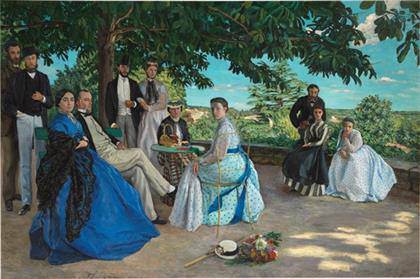
Duncan Grant
“Bathing” 1911
Oil on canvas, support: 2286 x 3061 mm
Purchased 1931© Tate
Tate Britain presents ‘Queer British Art 1861-1967’ Tate Britain hosts ‘Queer British Art 1861-1967’, the first exhibition dedicated to queer British art. Unveiling material that relates to LGBTQ identities, the show marks the 50th anniversary of the partial decriminalisation of male homosexuality in England and Wales. 5 April – 1 October 2017]]>
Source: Tate Britain
Spanning the playful to the political, the explicit to the domestic, Queer British Art 1861-1967 showcases the rich diversity of queer visual art and its role in society. Themes explored in the exhibition will include coded desires amongst the Pre-Raphaelites, representations of and by women who defied convention (including Virginia Woolf), and love and lust in sixties Soho. It features works by major artists such as Francis Bacon, Keith Vaughan, Evelyn de Morgan, Gluck, Glyn Philpot, Claude Cahun and Cecil Beaton alongside queer ephemera, personal photographs, film and magazines.
Work from 1861 to 1967 by artists with diverse sexualities and gender identities are showcased, and range from covert images of same-sex desire such as Simeon Solomon’s “Sappho and Erinna in a Garden at Mytilene” (1864) through to the open appreciation of queer culture in David Hockney’s “Going to be a Queen for Tonight” (1960). A highlight of the exhibition is a section focusing on the Bloomsbury set and their contemporaries – an artistic group famous for their bohemian attitude towards sexuality. The room includes intimate paintings of lovers, scenes of the homes artists shared with their partners and large commissions by artists such as Duncan Grant and Ethel Walker.
Many of the works displayed were produced in a time when the terms ‘gay’, ‘lesbian’, ‘bisexual’ and ‘trans’ had little public recognition. The exhibition illustrates the ways in which sexuality became publically defined through the work of sexologists such as Henry Havelock Ellis, campaigners such as Edward Carpenter and will also look at the high profile trials of Oscar Wilde and Radclyffe Hall. Objects on display includes the door from Wilde’s prison cell, Charles Buchel’s portrait of Radclyffe Hall and erotic drawings by Aubrey Beardsley.
Related content
Artist and Empire – Exhibition at Tate Britain (exhibition, 2015)
Follow us on:


